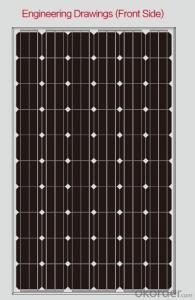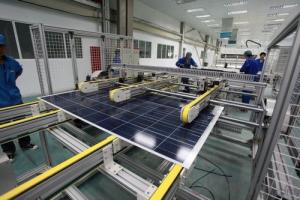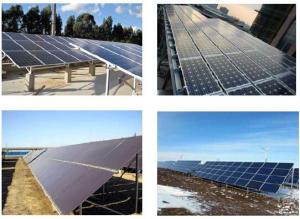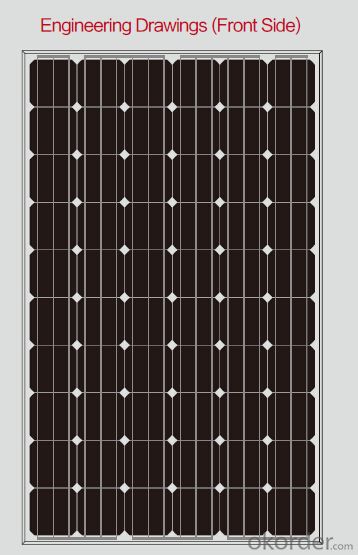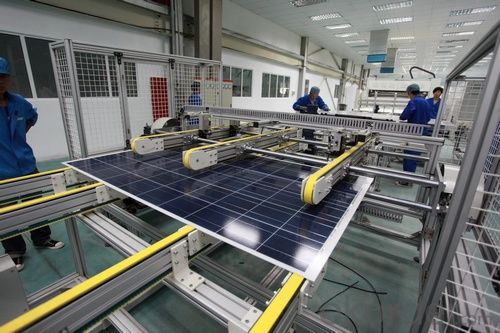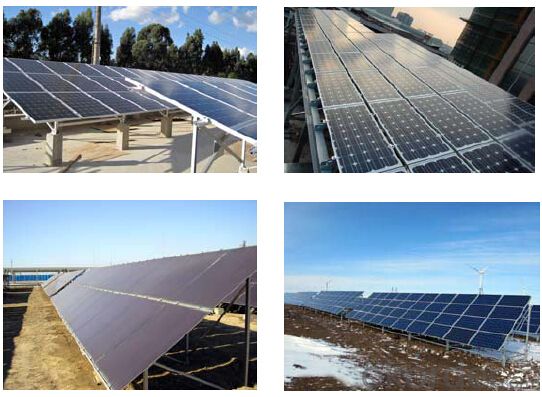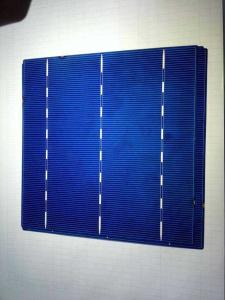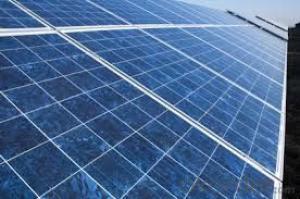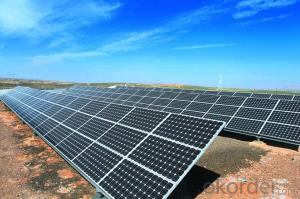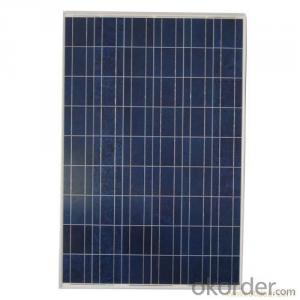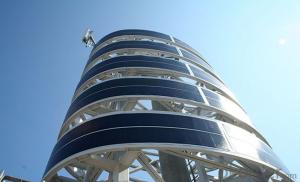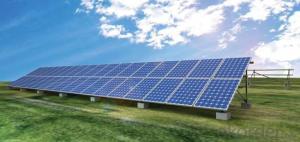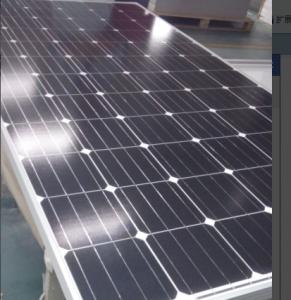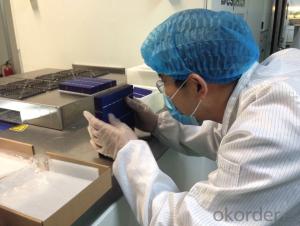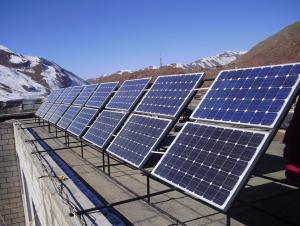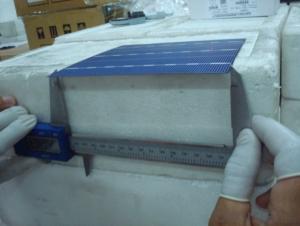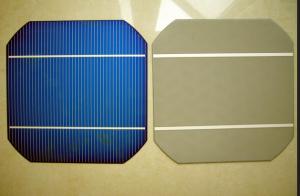Tecstar Solar Cells - High Efficiency and High Power Solar Modules
- Loading Port:
- Shanghai
- Payment Terms:
- TT OR LC
- Min Order Qty:
- 728 pc
- Supply Capability:
- 2000000 pc/month
OKorder Service Pledge
OKorder Financial Service
You Might Also Like
Specification
Advantage:
1.Widely using of the most popular and mature type of modulesfor on-grid system.
2.Specifications subject to technology and test conditions,GSUN Solar reserves the right of final interpretation.
3.Leading manufacturing technology in PV industry, strictly controlling the quality of raw materials and the process of producing.
4.100% EL inspection, ensures modules are defects free.
5.Cells binned by current to improve module performance.
6.Anti reflective glass. Not only to increase the light absorption, but also to make the module has the function of self-cleaning in water environment, effectively reducing the power loss caused by dust.
7.Outstanding performance in low-light irradiance environments.
8.Excellent mechanical load resistance: Certified to withstand high wind loads(2400pa) and snow loads(5400pa).
9.High salt and ammonia resistance.
10.Positive power tolerance:0-+5w.

Specification:
Temperature Coefficient
NOCT | 45℃±2℃ |
Temperature Coefficients of Isc (%/℃) | 0.0492 |
Temperature Coefficients of Voc (%/℃) | –0.3374 |
Temperature Coefficients of Pmp (%/℃) | –0.4677 |
Performance Parameters
31.9 | |
Max Power Current Imp(A) | 7.85 |
Open Circuit Voltage Voc(V) | 37.7 |
Short Circuit Current Isc(A) | 8.85 |
Max Power Pm(W) | 250 |
Mechanical Data
Dimension | 1655 x 992 x 40 mm |
Weight | 22.5kg |
No. of Cells and Connections | 60 (6 x 10) |
Tolerance | 0~+5W |
Cell | Monocrystalline Cell 156 x 156 mm |
Packing | 624 Pcs/40ft(H) Container |
Warranty
5 years product warranty
10-years 90% of Min. rated output power,and 25-years 80% of Min. rated output power warranty
Comprehensive Certificates:
CE Certificate
ISO 9001:2008:Quality management systems
IEC61215、IEC61730
TUV and UL
IDCOL for Bangladesh
Feature:
- High efficiency, multicrystalline silicon solar cells with high transmission and textured glass deliver a module effi ciency of up to 16.0%,minimizing installation costs and maximizing the kWh output of your
system per unit area.
- Tight positive power tolerance of 0W to +5W ensures you receive modules at or above nameplate power and contributes to minimizing module mismatch losses leading to improved system yield.
- Top ranking in the “TÜV Rheinland Energy Yield Test”
FAQ:What's your products warranty?
No less than 90% within 10yrs and no less than 80% within 25yrs.
FAQ:What's the power range can you supply?
We can supply from 5W to 315W solar panels.
FAQ: Can you design the solar system?
Yes, We can supply the battery and controller/inverter for your system with the solar panels together.
FAQ:How much Power can I expect to get from my Solar PV’s?
Typically an installed 1kWpk array will produce 800kWh/year. 2kWpk will produce 1600kWh/year and so on.
Why are PVs rated in kWpk rather then kilowatts?
kWpk means the power expected to be generated under the comparatively ideal conditions known as STC. In other words, a 100Wp panel will produce a maximum of 100W in peak (STC) conditions - this is equivalent to a bright sunny midsummer day in the UK.
How can I connect my Solar PV system to the grid?
You will need to use a grid-tie inverter. If you wish to get paid for the electricity you produce, you will need to ensure a G83-certified inverter is used and that it is installed by a Microgeneration Certification Scheme member whose membership number will need to be provided to your electricity supplier.
How much will I get paid for the electricity I feed into the grid?
If you install a qualifying small system (1-4kWpk) in the UK before October 2012 you will get paid 16 pence for every kWh you generate regardless of whether you use it yourself or export it to other users. This is a generation tariff or feed in tariff. It will go up each year in line with inflation. If you also use the electricity you have generated this means you do not have to buy it from the electricity company and so you will save around 11-15p per kWh at todays prices (Prices subject to change of course). Energy you generate but don't use yourself, i.e. you export it to the electricity company, will attract another payment to you of 4.5p per kWh. This payment is also index linked to the RPI so it will increase in line with inflation.
Is it true that I can get my electricity meter can spin backwards?
Not usually, nor is it legal to do this. The very old meters may cause this to happen however the company installing your PV will advise you if you need to ask for a meter replacement from the company supplying your electricity. This is usually free of charge.
- Q: Can solar cells be used for powering universities?
- Yes, solar cells can be used to power universities. Solar energy is a renewable and sustainable source of power that can be harnessed through solar cells. By installing solar panels on university buildings and campuses, universities can generate clean electricity to meet their energy needs, reduce their carbon footprint, and potentially save costs on energy bills. Additionally, solar power systems can be integrated with battery storage technology to ensure a constant power supply, even during periods of low sunlight or at night.
- Q: What is the role of grounding systems in solar cell systems?
- Grounding systems play a crucial role in solar cell systems as they provide a pathway for electrical current to flow safely into the earth. They help in dissipating excess electrical charges and reducing the risk of electrical shocks or fires. Additionally, grounding systems help to maintain stable voltages, minimize electromagnetic interference, and protect sensitive electronic components of the solar cell system.
- Q: Can solar cells be used for indoor applications?
- Yes, solar cells can be used for indoor applications. While solar cells are primarily designed to harness sunlight and convert it into electricity, they can also generate power from indoor lighting sources such as fluorescent or LED lights. However, the amount of electricity generated indoors is generally lower compared to outdoor conditions due to the reduced intensity of indoor lighting. Nonetheless, solar cells can still be used effectively for powering small devices or charging batteries in indoor settings.
- Q: How are solar cells connected in a solar panel?
- Solar cells are connected in a solar panel through a series of electrical connections called interconnects. These interconnects form a circuit that allows the flow of electrons between the individual solar cells, ensuring that the electrical current generated by each cell is combined to produce a higher voltage and power output.
- Q: What is the impact of solar cells on wildlife?
- Solar cells have a minimal impact on wildlife compared to other forms of energy generation. While some studies suggest that solar farms can disrupt or displace certain species, the overall impact is considered low. The installation of solar panels can provide shade and shelter for certain animals, and the reduction in greenhouse gas emissions associated with solar energy helps mitigate the effects of climate change on wildlife habitats.
- Q: What is the lifespan of a solar cell?
- The lifespan of a solar cell can vary depending on various factors, but on average, solar cells have a lifespan of around 25 to 30 years. However, with proper maintenance and care, solar cells can even last longer, sometimes up to 40 years or more.
- Q: Can solar cells be used for powering internet connectivity?
- Yes, solar cells can be used to power internet connectivity. Solar cells convert sunlight directly into electricity, which can be used to power various devices, including internet routers and modems. This allows for the provision of internet connectivity in remote or off-grid areas where traditional power sources may be limited or unreliable. Additionally, solar-powered internet connectivity can contribute to sustainability efforts by reducing reliance on fossil fuels and lowering carbon emissions.
- Q: What is the impact of dust and dirt on solar cell performance?
- Dust and dirt on solar cell surfaces can significantly impact their performance. They can reduce the amount of sunlight reaching the cells, leading to decreased energy production. The accumulation of dust particles can create a barrier, preventing photons from penetrating the solar cells effectively. This reduces the conversion efficiency and overall power output of the solar panels. Regular cleaning and maintenance are crucial to ensure optimal performance and maximize the energy generation potential of solar cells.
- Q: Can solar cells be used in aviation or aerospace applications?
- Yes, solar cells can be used in aviation or aerospace applications. They are commonly used in satellites and space probes to generate electrical power from sunlight. Additionally, solar cells can be integrated into the wings or fuselage of aircraft to provide a sustainable source of energy, reducing reliance on fossil fuels and extending flight time.
- Q: Can solar cells be used in museums?
- Yes, solar cells can be used in museums. They can be used to power various devices and lighting within the museum, reducing reliance on traditional energy sources and contributing to a more sustainable and environmentally friendly operation. Additionally, solar cells can be integrated into the design of museum buildings, providing a visually appealing and efficient way to generate renewable energy.
Send your message to us
Tecstar Solar Cells - High Efficiency and High Power Solar Modules
- Loading Port:
- Shanghai
- Payment Terms:
- TT OR LC
- Min Order Qty:
- 728 pc
- Supply Capability:
- 2000000 pc/month
OKorder Service Pledge
OKorder Financial Service
Similar products
Hot products
Hot Searches
Related keywords
